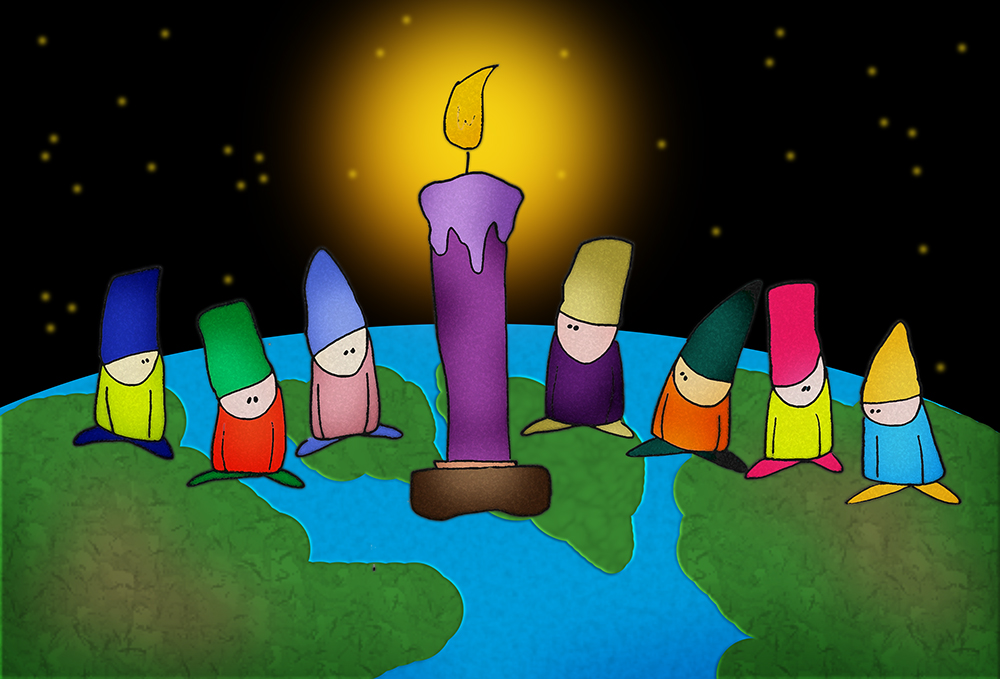Candles. I sure do like them. And, I love to burn them, in controlled measures. Me, being the safety-freak.
Some candles are very nice in the way they smell. Some are beautiful. Candles come in all shapes, sizes, and colors. But one thing they have in common? They look quite simple, but they’re amazingly ingenious.
Most of us probably don’t give it another thought when lighting a candle. But the way it lights in remarkably clever. First, you set fire to the wick (the little string poking up at the top). Wicker. Wicked. Wicket. Wicklow, Ireland. Or just wick. Candle Wick.
Okay. You fire up the wick and heat travels rapidly downward toward the wax body of the candle, a half of an inch down. This happens pretty quickly and you have more fire. That old pillar of hard wax below has a really low melting point. That is when all the fun begins.
That wax melts. Pretty instantly, it turns into a hot liquid and vaporizes. You can start to see that little puddle almost immediately. And THEN, that hot liquid-ish vapor turns around and funnels straight up around the wick. It is sort of like there is an invisible smokestack right there. Wooshers. Up it goes.
All of this. Super fast.
The wax vapor catches fire and burns, sending a flame high above the wick. So already, all sorts of things are going on here. It is sort of like being a chaperone at a high school dance. It is hard to keep your eye on everything.
At that point, scientifically, heat from the flame travels in three directions at once. Those three processes are called conduction, convection, and radiation.
Conduction carries heat down the wick, and that will melt even MORE wax from the candle. Next is Convection. It draws hot wax vapors out from the wick and sucks oxygen from the surrounding air into the base of the flame. Kind of like running sprints at the gym. You start sucking Oxygen. All of this causes the third thing — Radiation. That is when the flame gives off invisible beams of heat in all directions by radiation.
It is like a mini-science fair, right there in the middle of your romantic dinner, or seance, depending. Don’t use Ouiji Boards. Seriously.
So, basically, there you have it. Candles make light by making heat. They are sort of like incandescent lamps in that way; only they are cruder examples of Combustion. The fuel (wax) meets with the oxygen, and KA-freaking-POW! Well, not quite KAPOW! But KAPAHHHHH.
Enough science, dang it. I didn’t really mean for all of this to go that way. I was just thinking about the heat and light of the candle. Once the flame ensues, it is all pretty standard from one candle to the next. At the hottest point of the flame, it is about 2550º F. That’s the little blue flame area, around the yellow flamey part. The wax is about 140º F. And the total brightness is one Candlepower.
Each candle looks a little different when it burns. The tapers, the pillars, the round ones. An occasional groovy pyramid. You know. But that flame is about the same. One Candlepower of light. A standard candle 12.56636 lumens.
But the really cool thing. If you light a whole big bunch of candles, it gets a whole lot warmer, and so very much brighter. Yes, a big group of them, say 10,000 candles, would be 125,700 lumens. That’s bright.
We humans. WE, are like candles, in that we each have the potential for our light to shine through.
How very amazing it is, when a whole big bunch of us burn brightly together.
The world gets a little lighter, I’ll tell you.
Actually. It gets way brighter.
Shine on, my friends. Shine on.
===========
“How far that little candle throws his beams! So shines a good deed in a weary world.”
― William Shakespeare, The Merchant of Venice
===========
“There are darknesses in life and there are lights, and you are one of the lights, the light of all lights.”
― Bram Stoker, Dracula
===========
“We can easily forgive a child who is afraid of the dark; the real tragedy of life is when men are afraid of the light.”
― Plato
============
